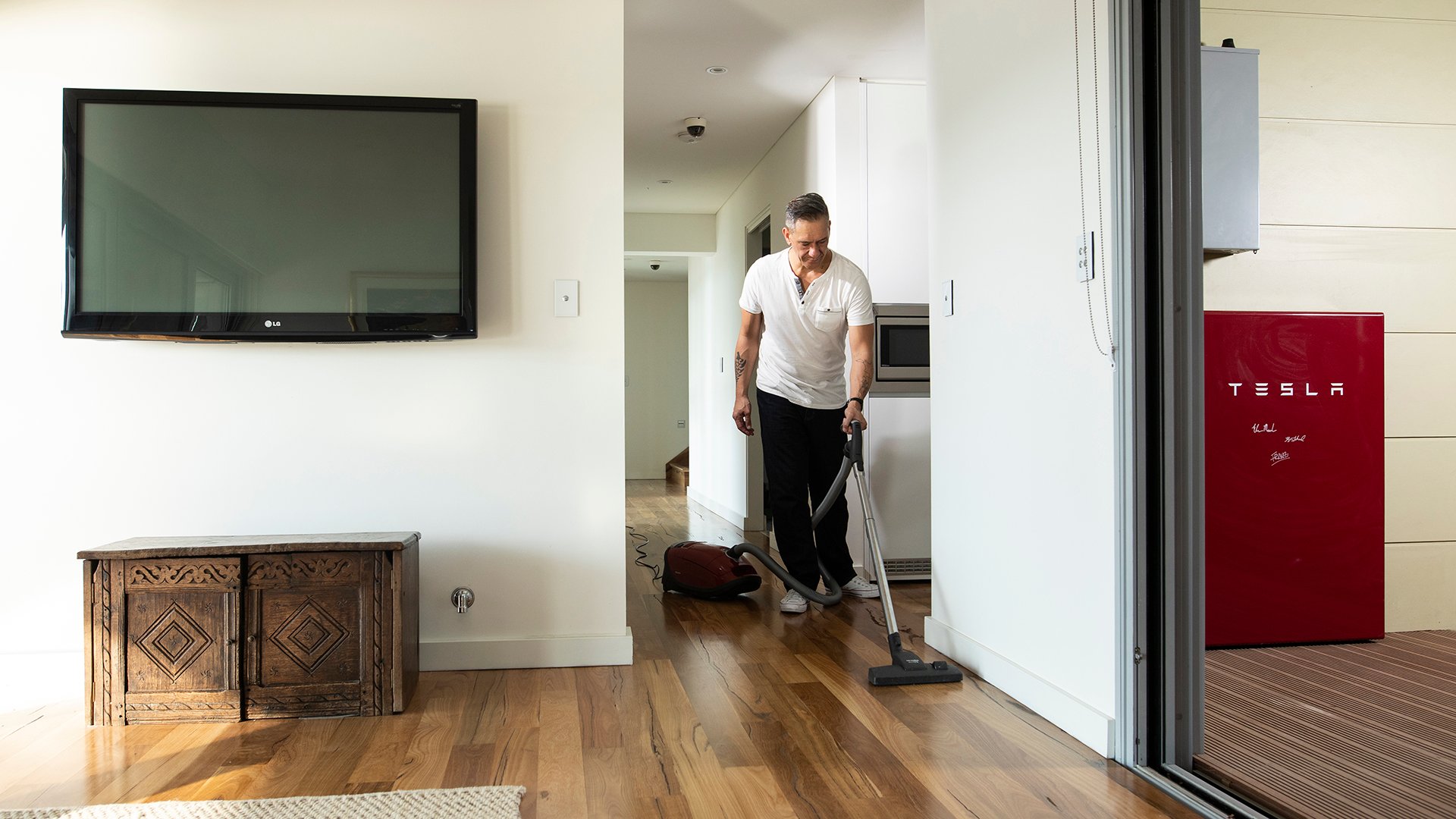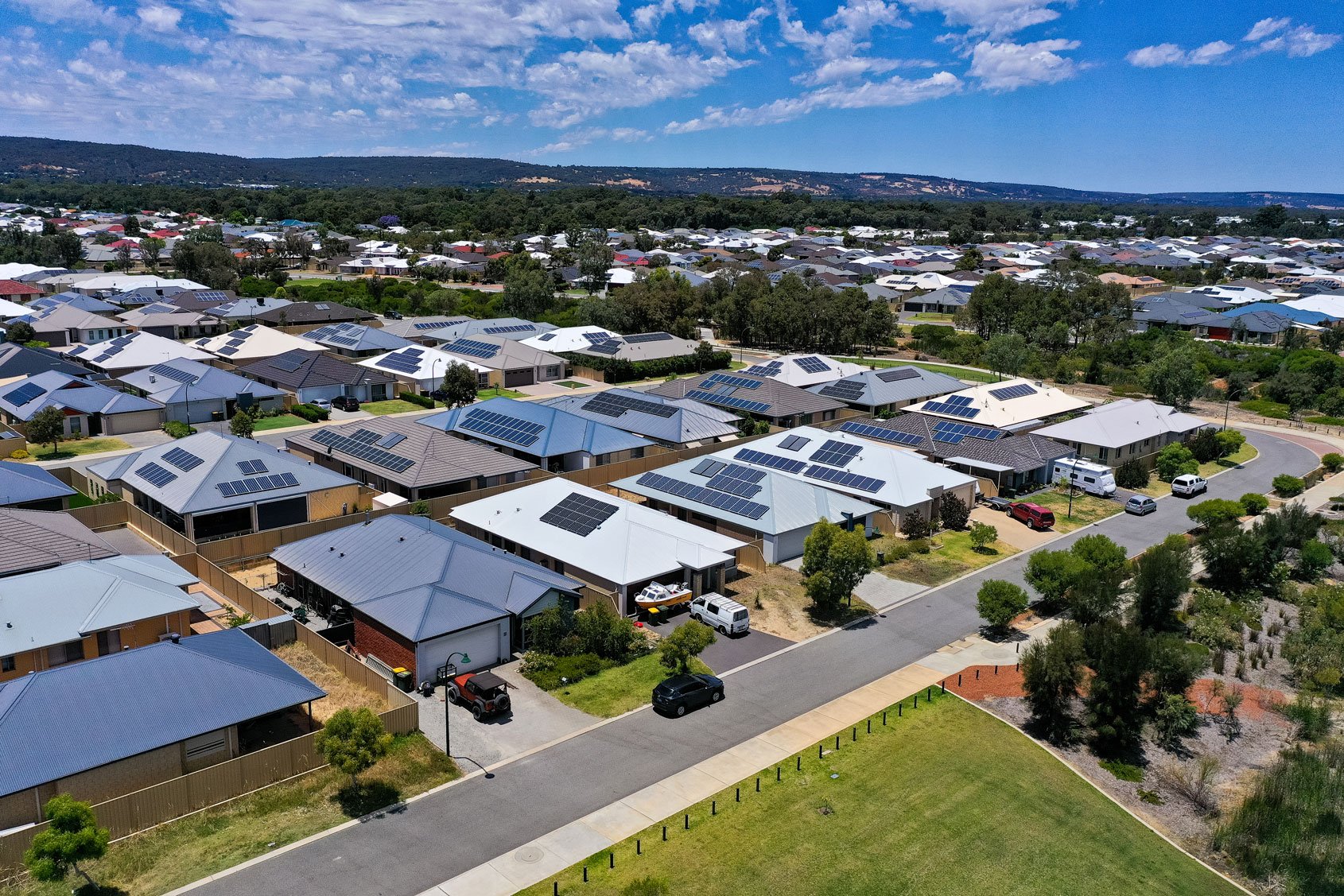
WA Battery Rebate
Store your rooftop solar, earn participation credits, and strengthen WA’s energy resilience with the new Household Battery Rebate.
Charge up with the WA Battery Rebate
Store the renewable energy you generate and help Western Australia move toward a cleaner, more resilient future.
Power you can bank on
Around 100,000 WA households will be able to access a battery rebate under two complementary government programs:
- $337 million WA Household Battery Rebate – WA State Government
- $2.3 billion Cheaper Home Batteries program – Australian Federal Government
Western Power’s role in the WA Residential Battery Scheme
At Western Power, we’re proud to support the WA Battery Rebate Scheme, a government initiative designed to make energy storage more accessible to households across Western Australia. As part of our commitment, we’re enabling the safe integration of more batteries into the electricity network and supporting a stable, reliable energy future for Western Australians.
Where you can find more information on the WA Rebate and how to apply
- Eligibility requirements
- Applying for the rebate via the Scheme Administrator
- List of approved vendors
- Synergy's DER Industry Resources
- Synergy's VPP battery rewards product
Virtual Power Plants
A Virtual Power Plant (VPP) lets your solar panels and battery work in sync with thousands of others across the network. When demand peaks, the VPP dispatches stored renewable energy to help maintain a reliable and balanced supply. In return, you can trim your bills and earn participation credits. It’s a simple way to use more clean energy, support a smarter, decentralised power system, and share the benefits with the wider community.
Synergy’s Virtual Power Plant (VPP) lets your battery earn participation credits by supplying stored renewable energy during peak-demand periods.
Updated Embedded Generator Connection technical requirements
We have recently updated our Basic Embedded Generator (EG) Connection Technical Requirements which apply from 1 July 2025. Western Power hosted a webinar on Monday 30 June, highlighting the key changes – you can watch the webinar below.
Industry update webinar
Basic Embedded Generator Connection Technical Requirements
Have any technical questions? Read our FAQs for more information.
View FAQs
WA Battery Rebate FAQs
To apply for the WA battery rebate you will need to apply to the scheme administrator. Once approved an application will need to be submitted to Synergy and then to Western Power for connection to the network.
A Virtual Power Plant (VPP) connects and coordinates household solar panels, batteries and other energy systems so they operate like a traditional power station. This allows energy to be shared with the network when it’s needed, supporting system stability and creating opportunities for you to earn additional value from your equipment. You can visit the Synergy website .
If you are on a shared connection, the maximum capacity for the connection point is 30kVA. You can apply for a Multi residential exemption. Please contact 13 10 87 for more information.
No. Emergency Solar Management (ESM) is a system that helps protect the network during very low energy demand by curbing solar exports.
A VPP, by contrast, actively manages energy export across multiple systems to match local network demand and conditions throughout the day.
If you’re changing or upgrading your inverter to support more panels, yes, you’ll need to apply for a system upgrade.
This can be done by you or your installer.
Yes, if you're applying for a rebate or installing AC-coupled batteries, an application is required, and your installer must submit a Notice of Completion to Building and Energy.
If you're adding DC-coupled storage without modifying inverters, an application may not be required, but check first.
Your current restrictions will remain in place until you upgrade the system. A new application will be needed at that time.
Most applications receive pre-liminary ‘approval to install’ from Western Power within 15 business days.
Solar battery system FAQs
For system-specific advice, it’s best to speak to a solar provider.
They’ll consider your lifestyle, current and future energy needs, and preferences before suggesting the right solar and battery system for you.
We evaluate the system’s impact on the network to ensure it can be supported.
Capacity limits are set within the Basic EG Connection Technical Requirements to ensure Distributed Energy Resources (DER) is safely and reliably connected to Western Powers network. Your retailer is the best point of contact for system size questions and options available to you.
They’ll also consider whether there’s enough suitable roof space for a larger system.
Your connection point has a fixed capacity. If it’s shared with other customers, multiple systems could exceed that capacity, which can make it unsafe and unreliable.
Shared connections need to be managed so everyone has access to a safe, secure electricity supply—and the opportunity to benefit from renewable energy.
If your strata has reached its limit, you may still be able to install a battery system by applying for a multi-residential exemption or upgrading your connection point. Please contact 13 10 87 for more information.
Yes. Advanced meters are installed in all new homes. In existing homes, we install an advanced meter when the old one reaches the end of its service life, or if your retailer requests one to support a new service, such as a new battery.
We’re working towards expand communication coverage across the electricity network. You can visit Advanced Metering FAQs for further details.
An export limit sets the maximum amount of electricity your solar system can export to the network. This helps maintain network stability, security, and safety for you and the wider community.
Under the Western Australian Technical Rules and the Basic Embedded Generator (EG) Connection Technical Requirements inverter capacity is assessed based on the total rated capacity of all inverters connected at the site, regardless of whether the system is exporting power. There are several reasons for this:
1. No offtake agreement with your Energy Retailer
If you do not have an offtake agreement with your Energy Retailer the inverter must be export limited to 1.5kW
2. Technical capability to export
Even if configured for zero export, inverters can technically still export power, which must be considered in network planning.
3. Local and broader network constraints
Larger inverter capacities can affect voltage levels, harmonics, and flicker, impacting power quality for all customers. These technical limits are in place to maintain compliance with Australian power quality standards.
4. Fair and efficient access
Standard limits for Basic EG systems help ensure fair access to network capacity for all customers. They also reduce the need for complex, case-by-case technical assessments, making the connection process simpler and faster.
5. Regulatory and safety compliance
We assess systems based on maximum potential impact, including safety measures like Emergency Solar Management, protection coordination, and voltage rise limits, which are all based on inverter capacity, not just export settings.
A generation limit sets the maximum amount of power your solar system can generate safety and securely. This could involve multiple inverters acting together as a single system, or a single larger inverter being de-rated to meet connection constraints.
For example, a 10kVA inverter with a 5KW generation limit would not be able to generate more than 5KW.